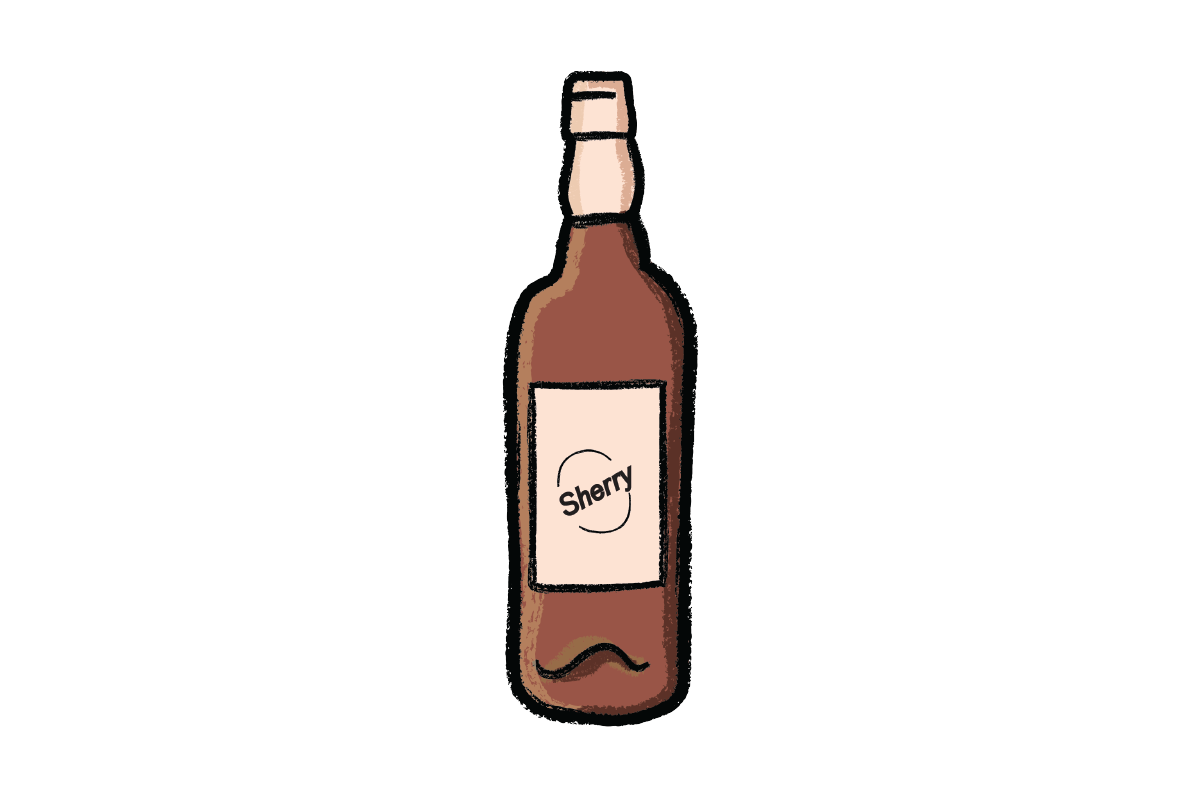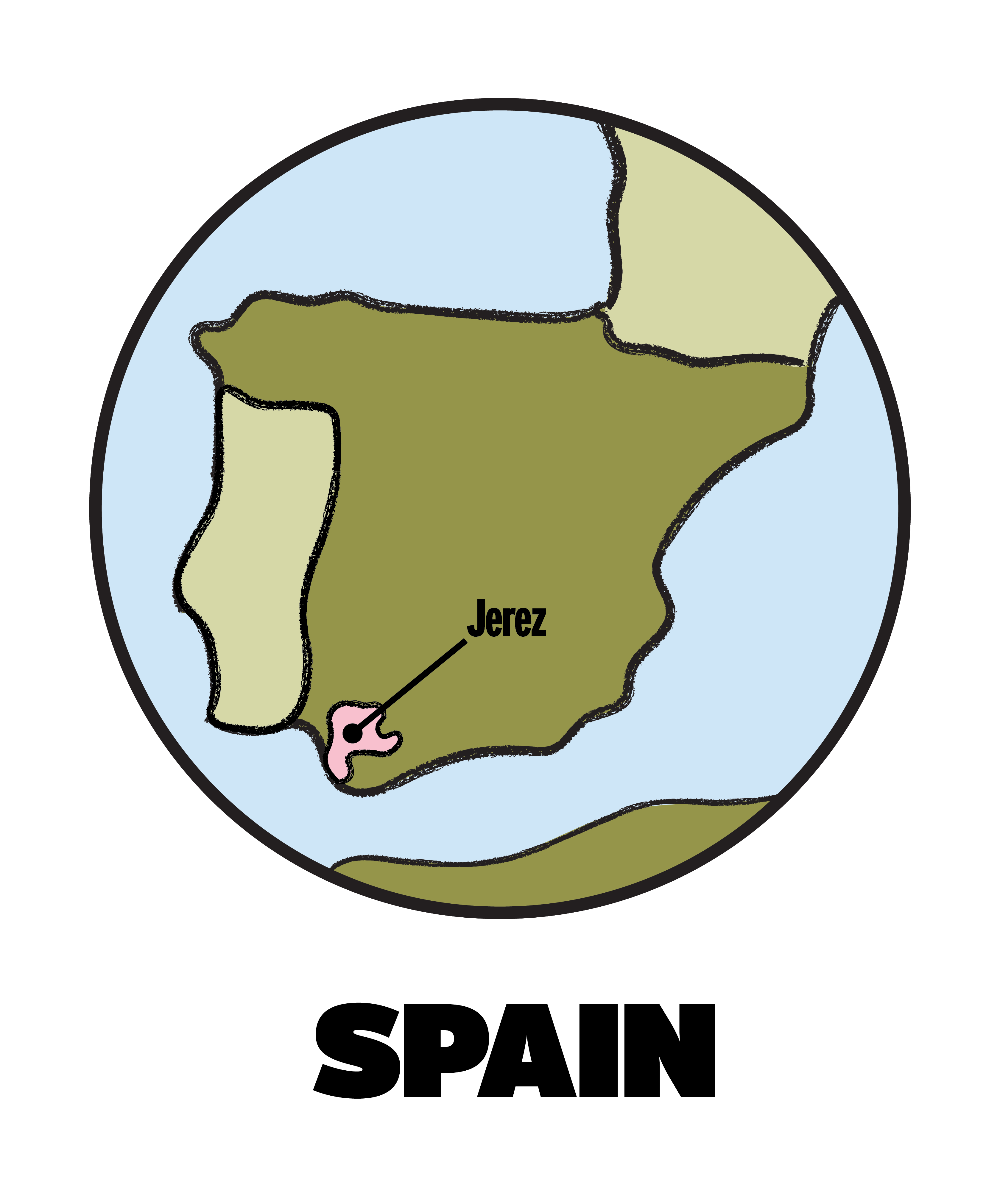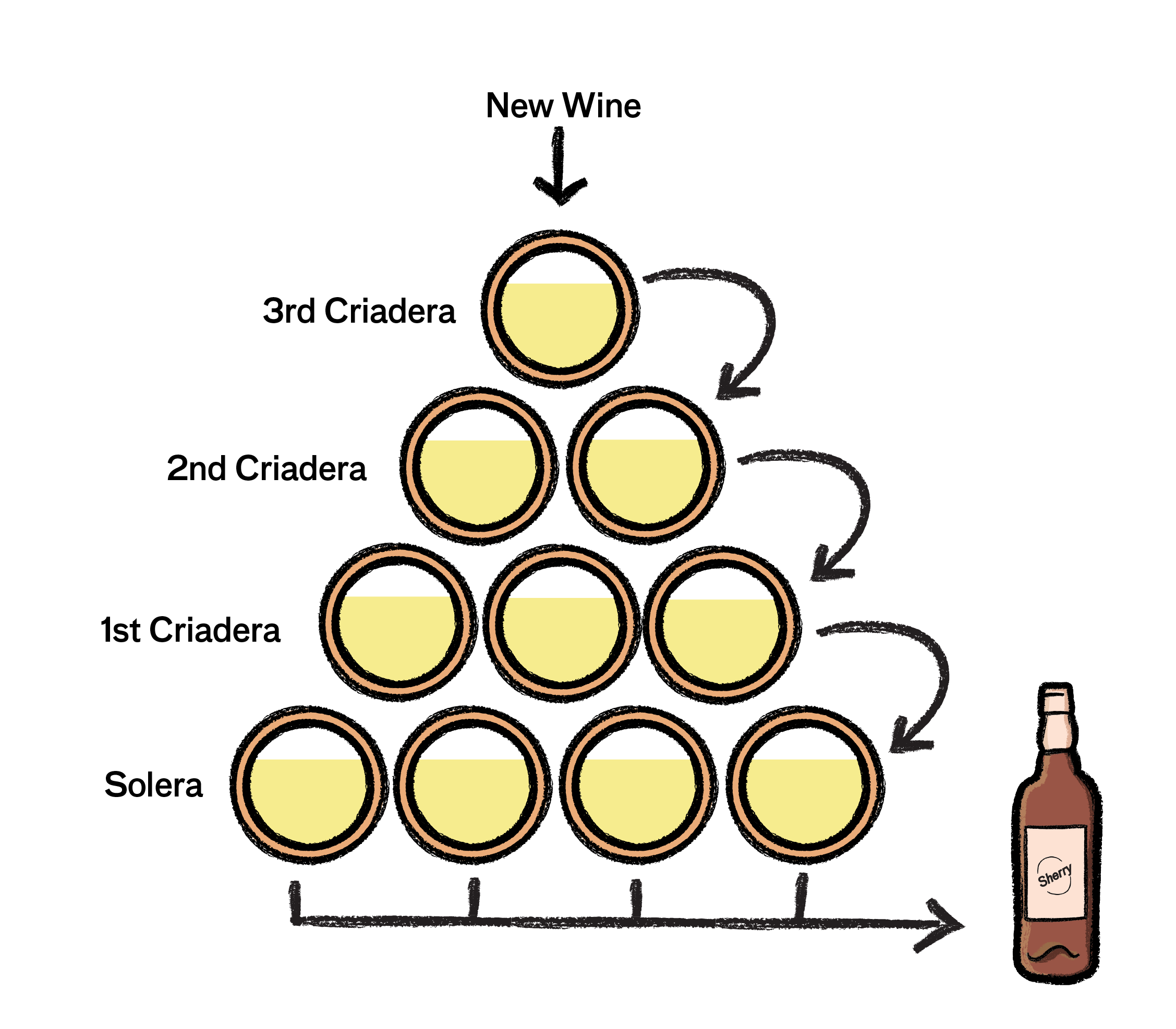

Sherry - what the hell is it?? And why you should be drinking it.
Sherry - not just for your Grandma.--red
That's what we want this page to really drive home. The drink that is best known to belong to your nan after dinner is actually a dynamic selection of different wines, from lip-tingling dry whites, to salty and nutty fortifieds, all the way to lush, sweet dessert wines.
Yes these wines are unusual in their flavours, but they are perhaps more delicious because of it. They're not the kind of wines you're going to drink multiple glasses of at a picnic; instead they are ideal as pre- or post-dinner drinks. One small glass to be savoured.
What is Sherry?--aromatic
Sherry is a catch-all, for a style of wine and to a certain extent an area. In the deep south of Spain the region of Jerez is ground zero for this ancient style. Located on the coast, about an hours drive south of Seville, the region is centred north of the famous port city of Cadiz and Sherry is produced all the way inland towards Cordoba, over 200km away. It's understandable then that the styles vary considerably.

At their heart, they are fortified wines made with the additional element of oxygen. The oxygen matures and softens some of the flavours, whilst maintaining the acidity. So they are richer wines than you might be used to, with flavours like olive brine, grilled nuts, green apple, caramel or fig.
History of Sherry--racy
'Sherry' has been made for over 2000 years in the southern parts of Spain, but it was only really in the 1600s that the style we associate with the word these days was really brought to fruition. It was around this time that grapegrowers began to discover the unique benefits of flor.
This is a thin veil of yeast that would naturally grow over the top of wine in a barrel that had some headspace where oxygen could exist. It protected the wine from turning sour, but allowed a small amount of air to permeate into the wine and thus change the flavours of the wine.
The wines made from the grape Palomino, grown on the amazing white chalk soils of the region, were considered to be the finest, and so were designated Fino.
This became the base expression of Sherry, and the style that is produced the most widely today. From the 1800s onwards the grapegrowers began experimenting with a technique popular in Portugal, that of adding alcohol to the wines to improve the flavour. So the range of styles grew.
Other styles include:--vegan
Manzanilla - the same as Fino, but specifically from the seaside town of Sanlucar de Barrameda, where the wines take on a unique green apple/chamomile flavour.
Oloroso - a high alcohol wine, where the additional added spirit kills off the flor and results in a nutty, salty style.
Amontillado - almost a halfway point between Fino and Oloroso, both fresh & nutty.
Palo Cortado - a more oxidative version of Amontillado, with more power and intensity.
Pedro Ximenez (aka PX) - the name of this style is in fact the name of the variety that is used to make it, and is a speciality of the inland region of Montilla Moriles. Dark, sweet and rich, these are great with chocolate.
Sweet/Cream - made from either PX or Moscatel, these wines are artificially sweetened and are of lesser quality than those above.
How is Sherry made?--cellar

In addition to the key points about fortification and oxygenation above, the other important factor in Sherry is the use of the solera system, a methodology also known as fractional blending. It essentially involves a multi-year barrel system, where new wine is drawn down into barrels containing the previous years wine, which in turn goes into barrels with the year before that, which is then drawn off into bottle. Each layer of barrels is referred to as a criadera. So the wine that ends up in bottle is essentially a blend of years, each ageing at slightly different rates, but all blended together.

So the grapes are harvested and fermented as usual This wine is then fortified, either slightly for lighter styles like Fino, or heavily for richer styles like Oloroso. Then it will age in the solera system, oxidising gently. The lighter wines will develop a flor, the richer wines will not (and so will oxidise more heavily). From here they are bottled, and drunk!
Food matching--plum
Depending on the style of Sherry, they can be incredibly versatile. A few ideas below, but feel free to simply have a glass before or after dinner!
Fino/Manzanilla - oysters, raw fish, olives, almonds, cured meats
Amontillado/Oloroso/Palo Cortado - roast pork, hard cheeses, steak sandwich, beef jerky
Pedro Ximenez - chocolate cake, figs in honey, warm dates, caramel ice cream
About the Author
Banjo Harris Plane is the three-time winner Sommelier of the Year Australia and a certified advanced Sommelier through the Court of Master Sommeliers. He first cut his teeth in the wine industry working as a sommelier in Australia's best restaurants, before starting multiple businesses in the space of a few years... these included two restaurants, a wine import business and co-founding Good Pair Days!
Do you know your wine personality? If your answer is no, take our quiz to find out which wines to pick up next and build your box!
Build my box





